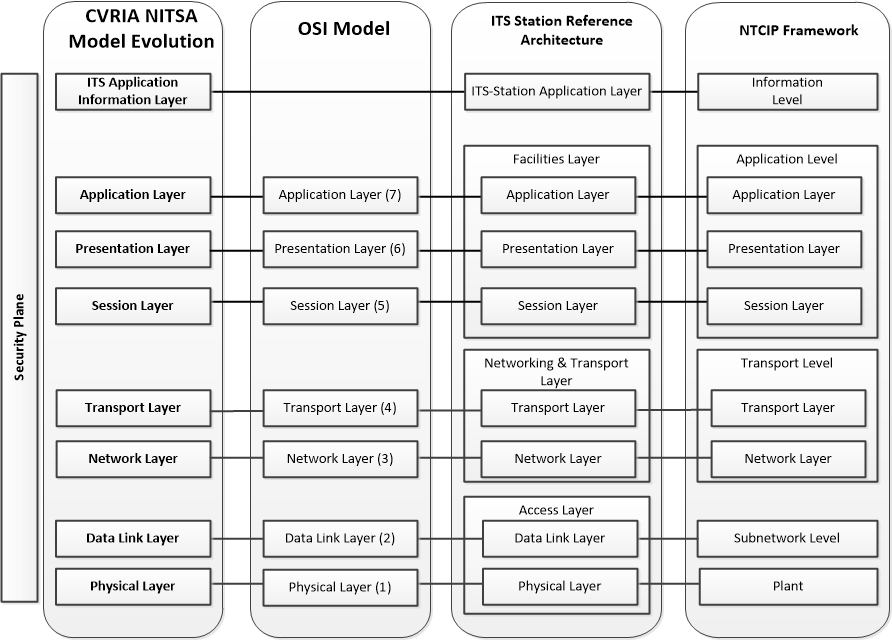Communications

The Communications View describes the communications protocols necessary to provide interoperability between Physical Objects in the Physical View. Each triple from the Physical View has been mapped to one or more data dictionary standards, referred to by the CVRIA as an information layer standard, and one or more communications profiles identify the communications protocols necessary to transport data described by an information flow.
The CVRIA NITSA Communications Model and Communications Profiles are based on the Open System Interconnection (OSI) Model, the NTCIP Framework, and DSRC/WAVE Implementation Guide. The diagram below shows how the Communications Model for the Connected Vehicle Reference Implementation Architecture (CVRIA) and National ITS Architecture (NITSA) can be related to other communications models, including the traditional OSI Model, the ITS Station Reference Architecture defined in ISO 24102 family of standards, as well as the NTCIP Framework. The 8 layers of the CVRIA NITSA Communications Model are described below:
- ITS Application Information Layer: The ITS Application information layer standards specify the structure, meaning, and control exchange of information between two end points.
- Application Layer: The application layer standards define the rules and procedures for exchanging encoded data.
- Presentation Layer: The presentation layer standards define the rules for representing the bits and bytes of information content to be transferred.
- Session Layer: The session layer provides the mechanism for opening, closing and managing a dialogue between application processes. Sessions may be asynchronous as in paired requests and responses (information exchanges), asynchronous as in an unsolicited publication of information, and may require acknowledgement or receipt or not.
- Transport Layer: The transport layer standards define the rules and procedures for exchanging application data between endpoints on a network.
- Network Layer: The network layer standards define the routing, message disassembly/re-assembly and network management functions.
- Data Link Layer: The data link layer standards define the rules and procedures for exchanging data between two adjacent devices over some communications media.
- Physical Layer: The physical layer is a general term used to describe the numerous signaling standards within this layer, typically developed for specific communications media and industry needs.

In addition, the Security Plane identifies standards that specify policies and system-to-system authentication, and encryption of data across one or more layers of the communications stack.
The communications profiles reflect likely implementation choices have been developed and assigned, where applicable, to triples. The communications profiles have been developed following closely the naming practices of the OSI (Open Systems Interconnection) Model.